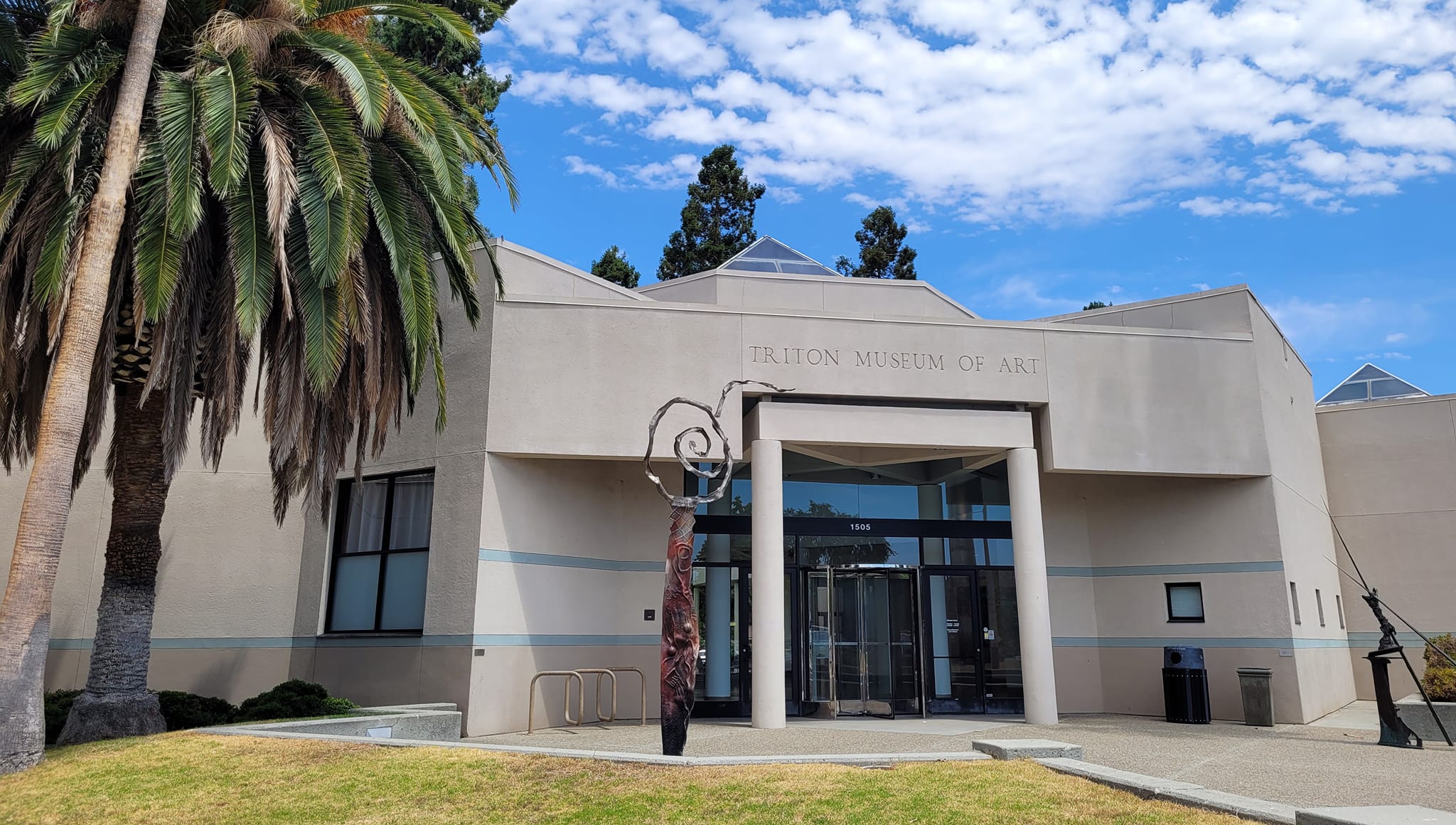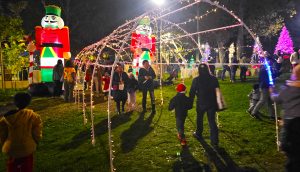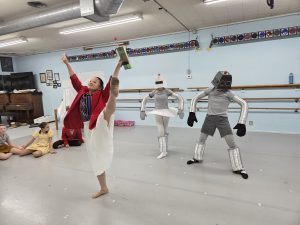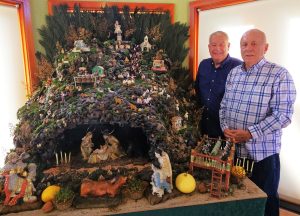The Triton might still be San José’s premier fine art museum had it not been for San José Fire Marshal John Gerhard’s ruling that the museum’s pre-WWI building was a fire hazard.
The museum got its start when founder Robert Morgan — a well-known San José attorney and rancher as well as a philanthropist and art connoisseur — began working to establish a fine art museum in San José.
“We have had some of the world’s finest art right here in our own community in private collections,” Morgan told the Mercury News in 1966.
“Now, for want of a local repository as these treasures become available through wills and states, they are lost to us forever,” he continued. “They are in other museums and galleries, just because we have not had the foresight to have an adequate and public place for their display.”
“Arts groups and proponents of San José as a cultural center have labored for more than half a century for an art center,” wrote reporter Mark Wright in the July 11, 1966 Mercury. “Now comes Triton Museum of Art, which hopes to fill the gap.”
The name ‘Triton’ comes from Greek mythology. Triton was the son of Poseidon, who was the god of horses and the sea.
The museum opened on Labor Day 1966, under director Sasha Schnittman, featuring the 1863 painting Man With a Hoe by Jean Francoise Millet, a realist painter noted for his painting of peasants.
“The museum has four floors housing the permanent collection and traveling exhibits,” wrote the Mercury on Sept. 4, 1966. “Included are European and 19th-century American paintings. One floor will be devoted to displays by California art galleries.”
The Triton soon became a top South Bay destination. State and local luminaries made a point of visiting the museum during trips to the Bay Area. In October 1966, Mrs. Edward Kennedy and Mrs. Edmund Brown visited the Triton on a campaign trip to support Brown’s re-election campaign.
“Blonde Joan Kennedy is expected to lend a touch of glamour to the brown gubernatorial race to counteract the Hollywood aura of Nancy Reagan, vivacious wife of GOP candidate Ronald Reagan,” wrote the Oct. 14, 1966 edition of the Mercury. “Two newly acquired paintings will be unveiled at the Triton museum during today’s champagne reception there.”
Urban Renewal Hurts San José, Helps Santa Clara
The mid-20th-century urban renewal movement operated indirectly to move the Triton out of San José and into Santa Clara.
San José had rolled out its grand urban renewal plan, stopping short of the Triton building at Second and San Fernando. At the same time, Fire Marshal Gerhard declared the museum’s pre-WWI building a fire hazard needing $95,000 ($903,000 today) in renovations, or, alternatively, demolition.
Morgan snapped back that the city’s then two-year-old “dangerous building” law was unconstitutional.
“The building is one of the finest in San José,” Morgan told the July 6, 1967 Mercury. “It is structurally sound and beautifully maintained.”
Morgan agreed that some of the requirements were reasonable and could be carried out for under $10,000.
“He criticized Gerhard,” the newspaper continued, “for ordering extensive renovation of his building while ignoring ‘numerous flop houses. The application of a city ordinance to destroy the worthwhile activities of downtown while failing to apply the same ordinance to deserted rat-infested buildings will ultimately destroy downtown San José.’”
Calling San José “hostile” to cultural activities, by early October, Morgan was talking to Santa Clara officials about moving to the new civic center on El Camino — part of Santa Clara’s own fantasy of a glamorous new urban center. On Oct. 5, 1967, the Triton board voted to leave San José.
Santa Clara “officialdom was overjoyed at the unexpected move,” wrote the Oct. 5, 1967 Mercury. “‘We are very excited about the prospect of getting this fine museum,’ said Santa Clara Mayor Larry Marcelli.”
Attesting to the way politics used to be done, Santa Clara officials apparently found out about the proposed move and “scheduled the meeting with Morgan at the spur of the moment for last night [Thursday] at a Santa Clara dinner house,” wrote the Mercury.
The city offered Morgan a $1 lease on the land where the Triton now stands. Morgan agreed to finance the museum’s construction and groundbreaking, which began in December 1967.
The Triton was originally planned as a complex of eight “pavilions” connected by covered breezeways; the site was to include exhibits of California art, traveling shows from major museums, a children’s art museum, and an outdoor theater and concert hall. Only three buildings were completed, and they now house the Santa Clara Players and classrooms.
As construction finished, a dispute arose when the Triton told the city council that covered walkways couldn’t be completed in the first phase.
“Councilman Gary Gillmor warned it would set a ‘dangerous precedent’ to allow, the project to continue without the walkways,” wrote the May 2, 1968 Mercury. “Councilman Matt Tallia challenged the parking area, calling the plans ‘jazzed up.’ And Councilman William Wilson Jr. cut in sharply, ‘It was haggling over trivia little points like this that drove the Triton out of San José.’
“Talia and Wilson exchange verbal blows while Mayor Larry Marcelli hammered for order,” the Mercury continued. “Wilson later conceded that the first phase is ‘not as monumental as he would’ve liked to see it, but Triton should have time to follow through.’”
A new director, Julie Sullivan, was appointed in May 1968, and on May 19, the new Triton opened its doors to the public. The first show was a Currier and Ives exhibit.
This year, the Triton turns 60 in a new building, but it is still a Santa Clara icon.












its lovely we have this museum, if only we had a down town like other cities. but at least we have the Triton
Wow things sure moved a lot faster back in the ’60s.
July 6, 1967 – Morgan gets quoted in the Mercury news that he disagrees with the SJ fire marshal
Oct. 5, 1967 – the Triton board voted to leave San José
December 1967 – city offered Morgan a $1 lease on the land, Morgan agreed to finance the museum’s construction and groundbreaking, which began construction
May 1968 – the new Triton opened its doors to the public
So in 14 months they were able to get the land, finance, build, move into and open a new museum. Amazing. Anyone want to guess how long it would take nowadays?